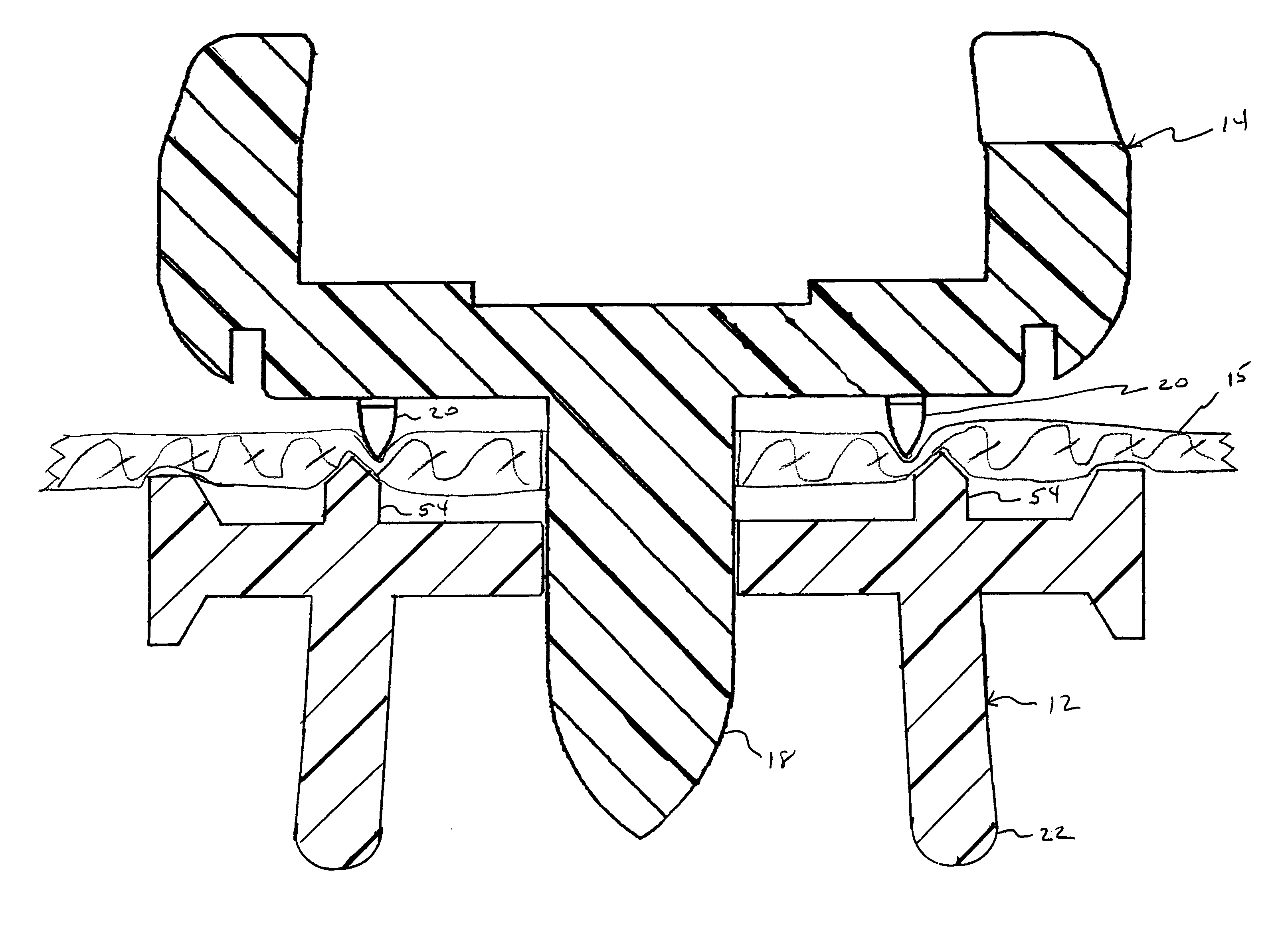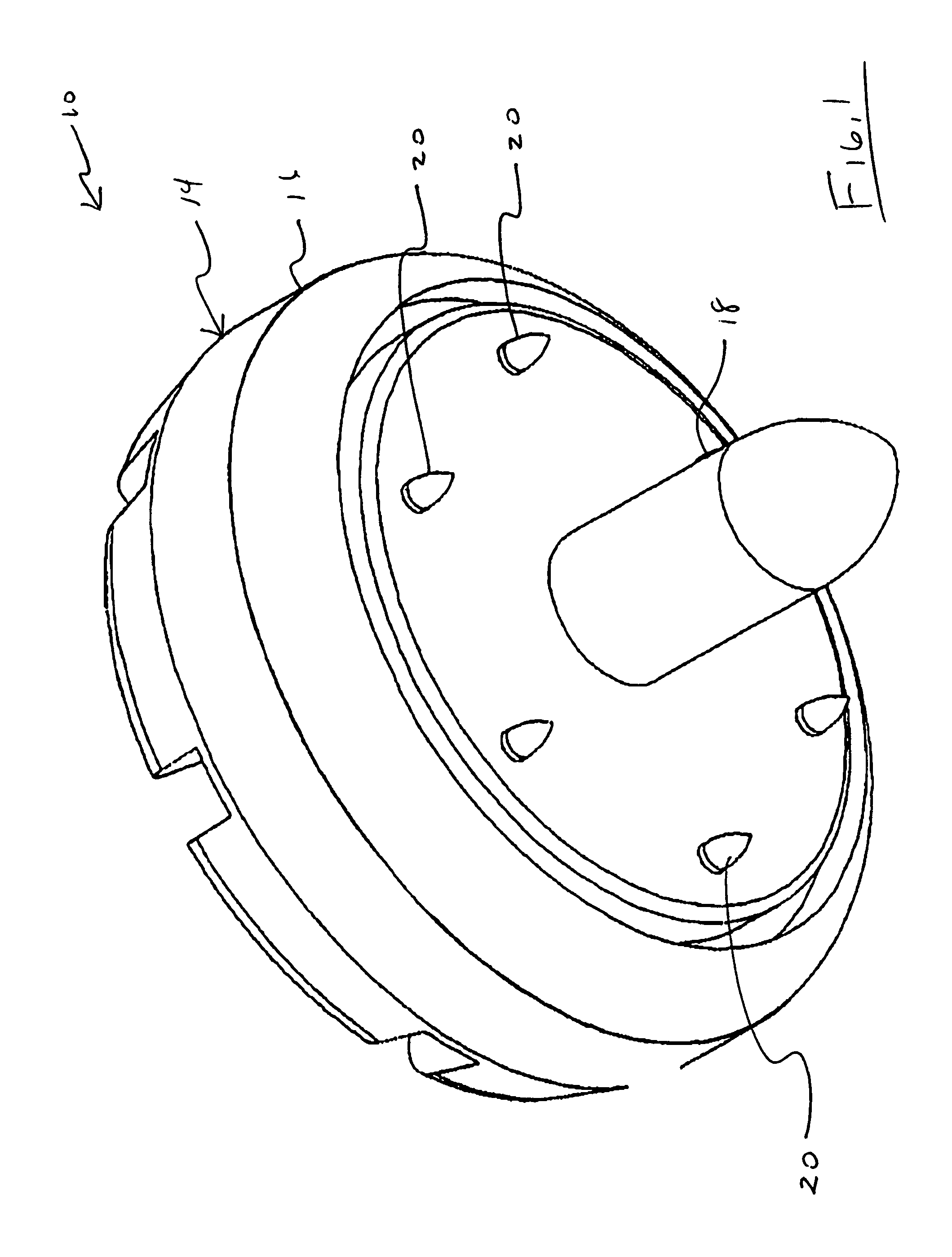Snap fastener
a technology of snap fasteners and snap clips, which is applied in the field of snap fasteners, can solve the problems of plastic snap fasteners not creating a sufficient retention force in their attachment to fabrics, and the manufacturing of strapped metal snap fasteners is somewhat complex
- Summary
- Abstract
- Description
- Claims
- Application Information
AI Technical Summary
Benefits of technology
Problems solved by technology
Method used
Image
Examples
Embodiment Construction
[0021]Referring to FIGS. 1 and 2, snap fastener 10 generally includes female portion 12 and male portion 14. Female portion 12 and male portion 14 are formed from a polymer material. For example, female portion 12 and male portion 14 may be formed from holopolymer plastic, such as Delron or another appropriate polymer. Snap fastener 10 may be advantageously formed by injection molding but may be formed by other techniques as well. Snap fastener 10 may be used for fastening on a textile product 15 but may also be used on various other applications such as attaching fabric covers to solid structures.
[0022]Snap fastener 10 may be secured to a textile product by a mechanical approach that includes peening. This will be discussed further below. Other securing techniques may be used as well.
[0023]Referring to FIG. 1 male portion 14 generally includes cup portion 16, rivet shaft 18 and barbs 20.
[0024]Referring to FIG. 2, female portion 12 generally includes stud 22 and plate 24.
[0025]Refer...
PUM
 Login to View More
Login to View More Abstract
Description
Claims
Application Information
 Login to View More
Login to View More - R&D
- Intellectual Property
- Life Sciences
- Materials
- Tech Scout
- Unparalleled Data Quality
- Higher Quality Content
- 60% Fewer Hallucinations
Browse by: Latest US Patents, China's latest patents, Technical Efficacy Thesaurus, Application Domain, Technology Topic, Popular Technical Reports.
© 2025 PatSnap. All rights reserved.Legal|Privacy policy|Modern Slavery Act Transparency Statement|Sitemap|About US| Contact US: help@patsnap.com



